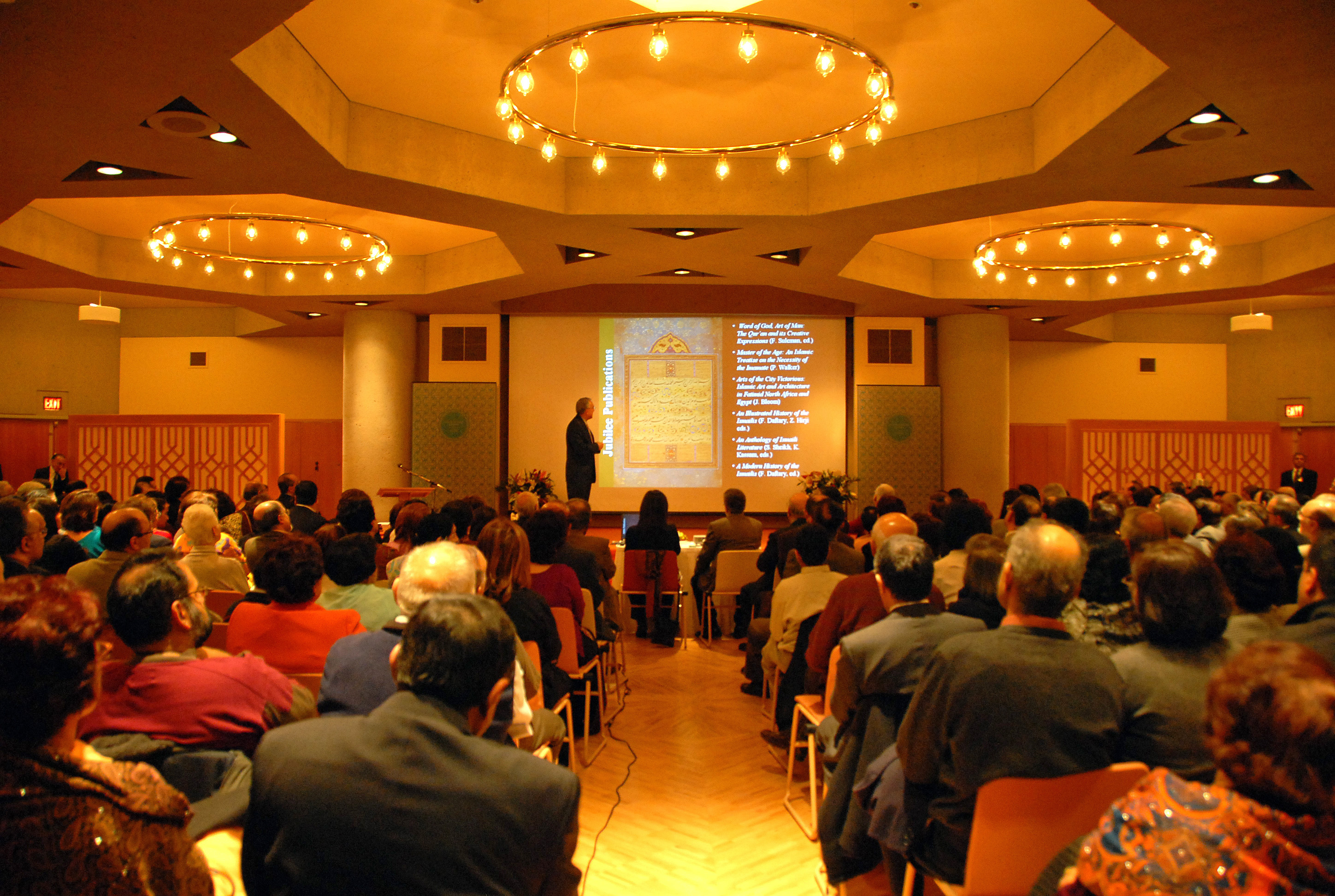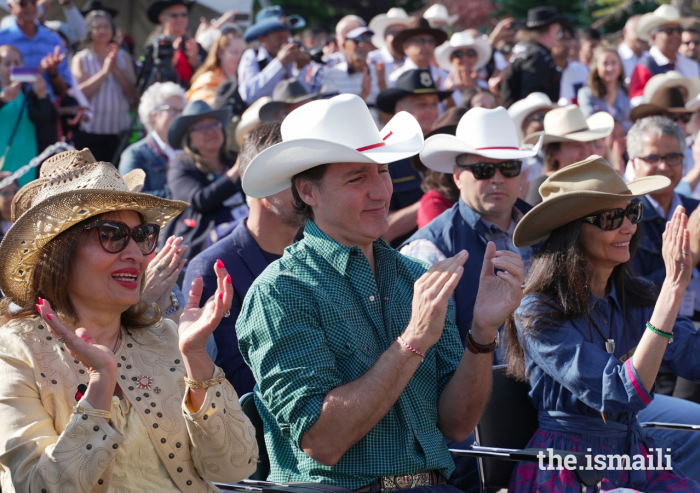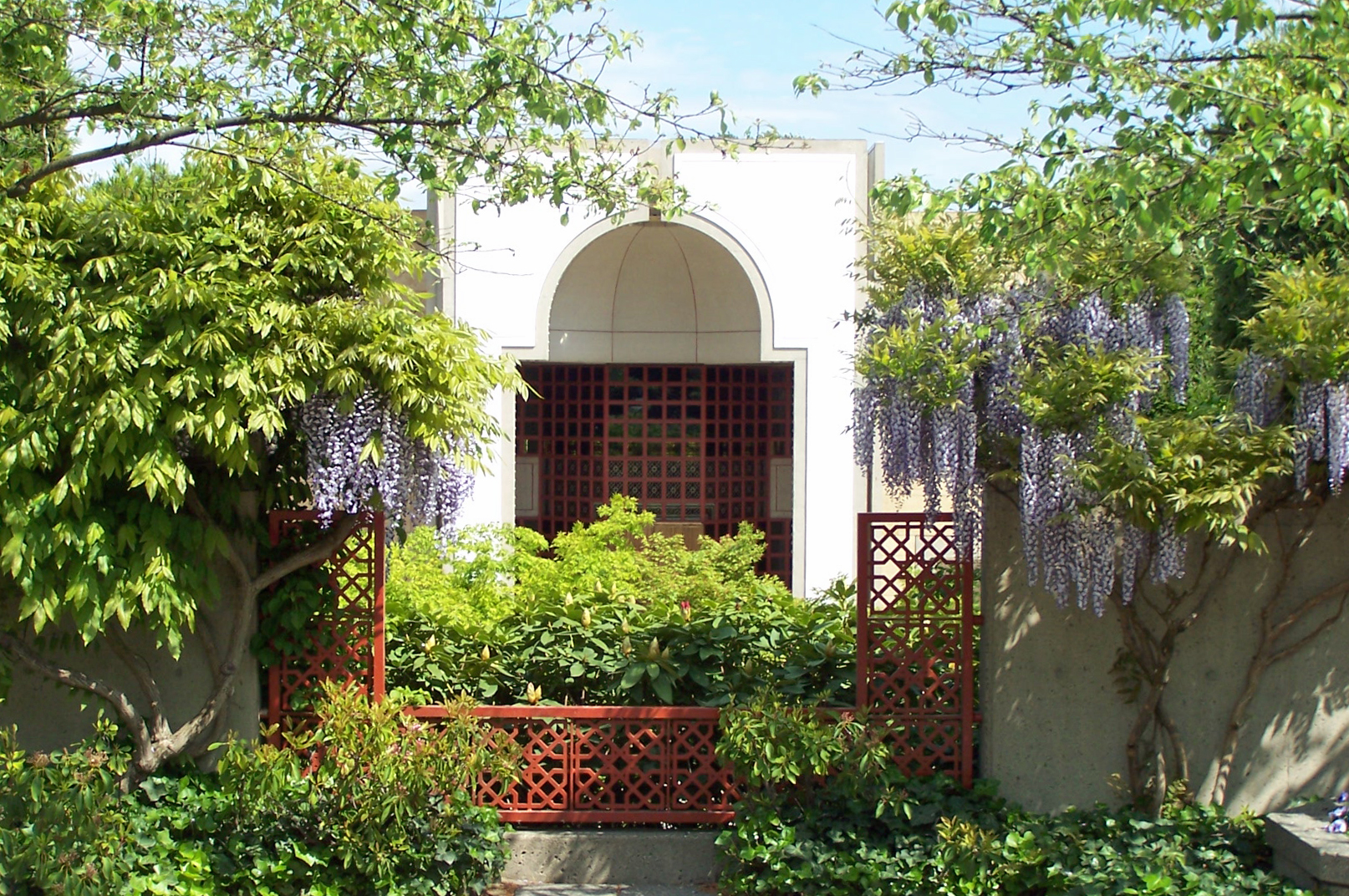 Leafy plants and fragrant flowers accent the exterior of the Ismaili Centre, Burnaby. Nurdin Dhanani
Leafy plants and fragrant flowers accent the exterior of the Ismaili Centre, Burnaby. Nurdin DhananiOn 23 August 1985, then Prime Minister of Canada, Brian Mulroney, officially opened the Ismaili Centre, Burnaby in the presence of Mawlana Hazar Imam and then Premier of British Columbia, Bill Bennett. The opening of the first Ismaili Centre in North America was a historic moment for the Jamat in Canada and around the world.
Farouk Verjee, then President of Ismaili Council for Canada, was intimately involved in the planning, development and opening of the Centre. He describes a meeting that occurred on the morning of Mawlana Hazar Imam's 1978 visit to Vancouver when Hazar Imam announced to the Jamati leadership that Burnaby would be home to the first Ismaili Centre in Canada. “It was much more than just a building,” he says, “it was a powerful message to the Jamat that Canada was to be our permanent home.”
The building was designed by Vancouver architect Bruno Freschi. In 2006, Freschi visited the Centre for the first time since his involvement in the project, and spoke of his inspiration for the building and the rationale and purpose of the building from an architectural standpoint.
 Architect Bruno Freschi describes to Mawlana Hazar Imam and the Lieutenant Governor of British Columbia, how the Ismaili Centre, Burnaby will take shape. Christopher Little
Architect Bruno Freschi describes to Mawlana Hazar Imam and the Lieutenant Governor of British Columbia, how the Ismaili Centre, Burnaby will take shape. Christopher Little“I was inspired by the opportunity to work on a significant spiritual architectural space, and one from such a long and profound tradition in spiritual architecture,” said Freschi. “Through very illuminating discussions with His Highness, the local community and other consultants, I found an open minded and very willing client group in a passionate search for an icon to represent this new community in Canada.”
“Mawlana Hazar Imam was intimately involved in the design process,” recalls Verjee. “And Prince Amyn played a key role as well, particularly in the design and development of the beautiful courtyard.”
The Centre is a synthesis of Islamic architecture and contemporary design, drawing on architectural principles steeped in Muslim history and tradition, but reflecting the requirements of modern-day society. The fusion of these seemingly disparate elements results in a design that draws strength from its diversity and is also rooted in timeless values. The use of architecture to convey layers of meaning is evident not only in the Ismaili Centres in Burnaby and around the world, but also in the Delegation of the Ismaili Imamat in Ottawa that was opened in 2008.
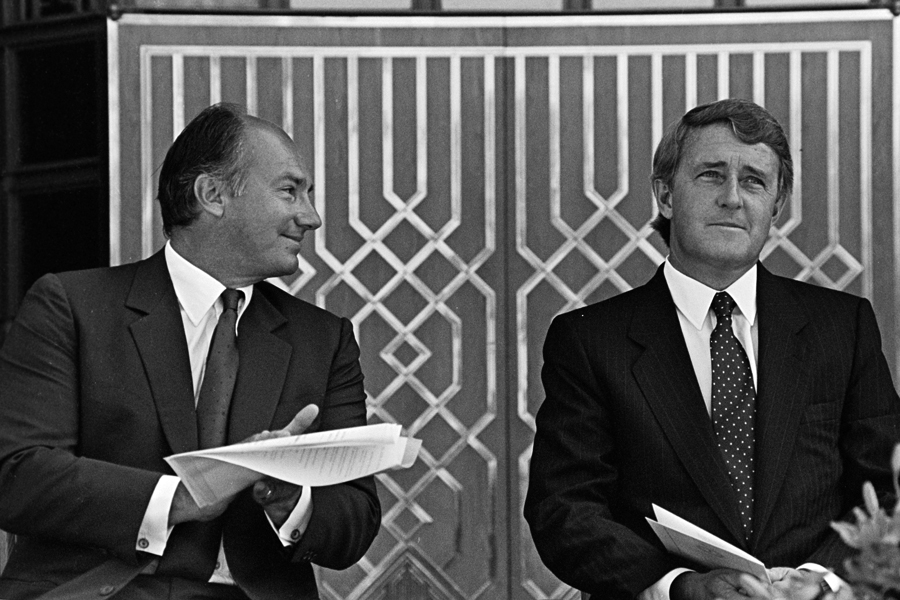 Mawlana Hazar Imam applauds Prime Minister Brian Mulroney, following his remarks at the Opening Ceremony of the Ismaili Centre, Burnaby. Zahur Ramji
Mawlana Hazar Imam applauds Prime Minister Brian Mulroney, following his remarks at the Opening Ceremony of the Ismaili Centre, Burnaby. Zahur RamjiThe Delegation building was inspired by rock crystal, which presents itself differently as light moves through it and is a symbol for the profound beauty and unfolding mystery of creation itself, and of the Creator. The melding of design concepts will also be employed in projects currently under construction in Toronto – the Ismaili Centre, the Aga Khan Museum and their Park on Wynford Drive. The architecture of these buildings is inspired by the past, but also by the modern day, making the structures relevant for generations to come.
At the opening ceremony of the Ismaili Centre, Burnaby, Mawlana Hazar Imam outlined his vision for the Centre: “This will be a place of congregation, of order, of peace, of prayer, of hope, of humility, and of brotherhood,” he said. “From it should come forth those thoughts, those sentiments, those attitudes, which bind men together and which unite. It has been conceived and will exist in a mood of friendship, courtesy, and harmony. While the building will be an important focus in the social and religious life of the local Ismaili community in Burnaby, it is my hope, a very deep hope, that it will become a symbol of a growing understanding in the West of the real meaning of Islam.”
During the 25 years since its opening, the Centre has served as a conduit through which the community has sought to fulfil this dynamic vision not only for the Jamat, but also for the wider Canadian and international communities. The Centre has welcomed an array of social, political and business leaders, crossing the lines of political affiliation, culture and religion, and has provided a meaningful setting for the promotion of dialogue and the sharing of ideas.
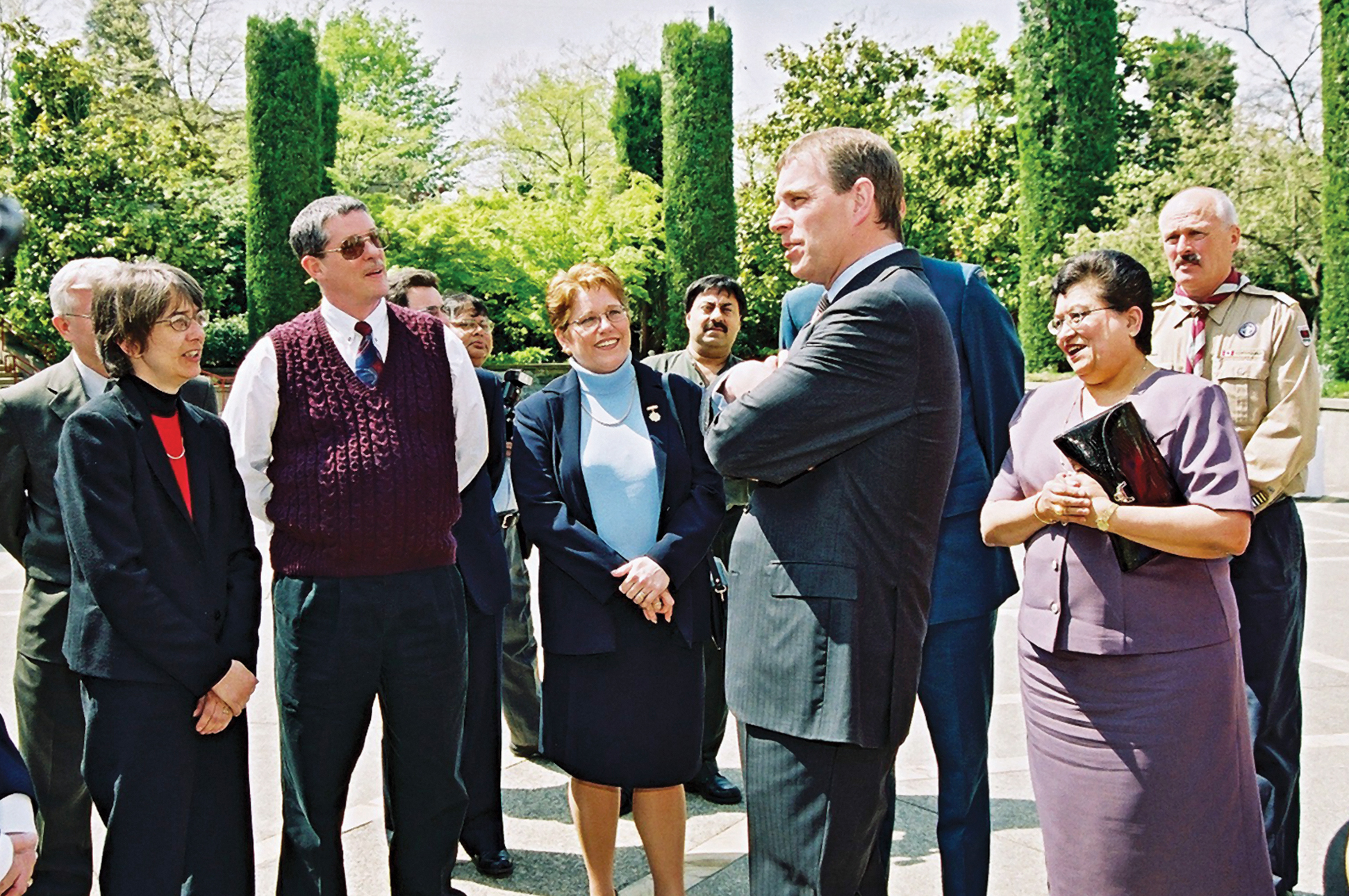 His Royal Highness Prince Andrew, Duke of York, speaks with guests and recipients of The Duke of Edinburgh's Award in the courtyard of the Ismaili Centre, Burnaby. Aziz Ladha
His Royal Highness Prince Andrew, Duke of York, speaks with guests and recipients of The Duke of Edinburgh's Award in the courtyard of the Ismaili Centre, Burnaby. Aziz Ladha“The Centre was the first Silver Jubilee project in Canada,” says Ismaili Council for Canada President, Mohamed Manji. “As I look back, I see the Jamat and its outlook have changed significantly since its establishment. In any city – in any community – the built environment speaks to the life of the community. The Centre in Burnaby is more than a place of gathering, it has become a focal point. It provides a sense of pride, belonging and identity. It has also been a source of education about Islam and the Ismaili Jamat. And, it is utilised by people from all walks of life as a place for meetings and seminars, thus providing the Jamat an opportunity for meaningful interaction.”
Both past and recent events held at the Centre demonstrate its role in fostering a pluralistic civil society where the diversity of cultures, traditions and ideas are celebrated. Since the opening of the Centre, the building has continually welcomed citizens from within its neighbourhood to discuss the commonalities amongst their faiths.
During Mawlana Hazar Imam's recent Golden Jubilee visit, the City of Burnaby recognised the contributions of Mawlana Hazar Imam and the local Ismaili community by gifting a large parcel of land next to Burnaby Lake Jamatkhana, which will be developed into a park. In his remarks, the Mayor said: “We are honoured to create this park on the occasion of His Highness' Golden Jubilee as the City of Burnaby's recognition and thanks to the Aga Khan and the Ismaili community for making Burnaby their home. We have benefitted from their enterprise and contribution to civil society.”
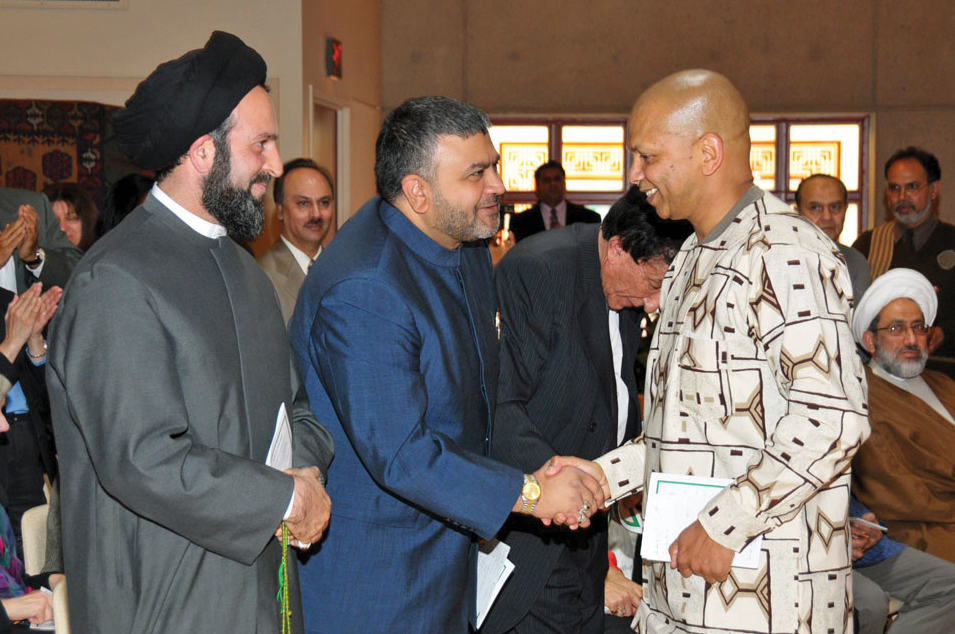 Professor Farid Esack is congratulated by ummah leaders during an event held in commemoration of Milad-un-Nabi at the Ismaili Centre, Burnaby. Courtesy of the Ismaili Council for Canada
Professor Farid Esack is congratulated by ummah leaders during an event held in commemoration of Milad-un-Nabi at the Ismaili Centre, Burnaby. Courtesy of the Ismaili Council for CanadaPresident Manji says that the gift from the City of Burnaby “is a wonderful example of how the Jamat and the Ismaili Centre have had an impact in Canada, and how the Centre in Burnaby has been a catalyst for the continued success of the Jamat.” Similarly, Manji adds that the projects on Wynford Drive represent a turning point for the Jamat, offering it a trajectory along which to reach even greater heights of success.
In September 2009, the Olympic Truce Dialogue was held at the Centre, where Her Excellency the Right Honourable Michaëlle Jean, Governor General of Canada, led a dialogue aimed at engaging youth in meaningful and action-oriented conversation on the topic of peace-building through sport and culture. In welcoming the guests, President Manji noted that the values of the Olympic Truce – humility, tolerance, pluralism, the creation of a peaceful and better world through sport, and the spirit of volunteerism – are values that the Ismaili community also lives by, and are cherished by all Canadians.
The following month, the Centre welcomed His Excellency Professor Gilbert Bukenya, Vice President of Uganda, who spoke about his country's socio-economic progress and the growth of economic opportunities. And, more recently, on 24 April 24 2010, the Chief Justice of Canada, Beverley McLachlin, was a guest at a luncheon held at the Centre, where she spoke about improving access to justice and the role of alternative dispute resolution. Professor Azim Nanji, Senior Associate Director for Islamic Studies at Stanford University, and past Director of The Institute of Ismaili Studies, also spoke on the topic of justice in Muslim contexts.
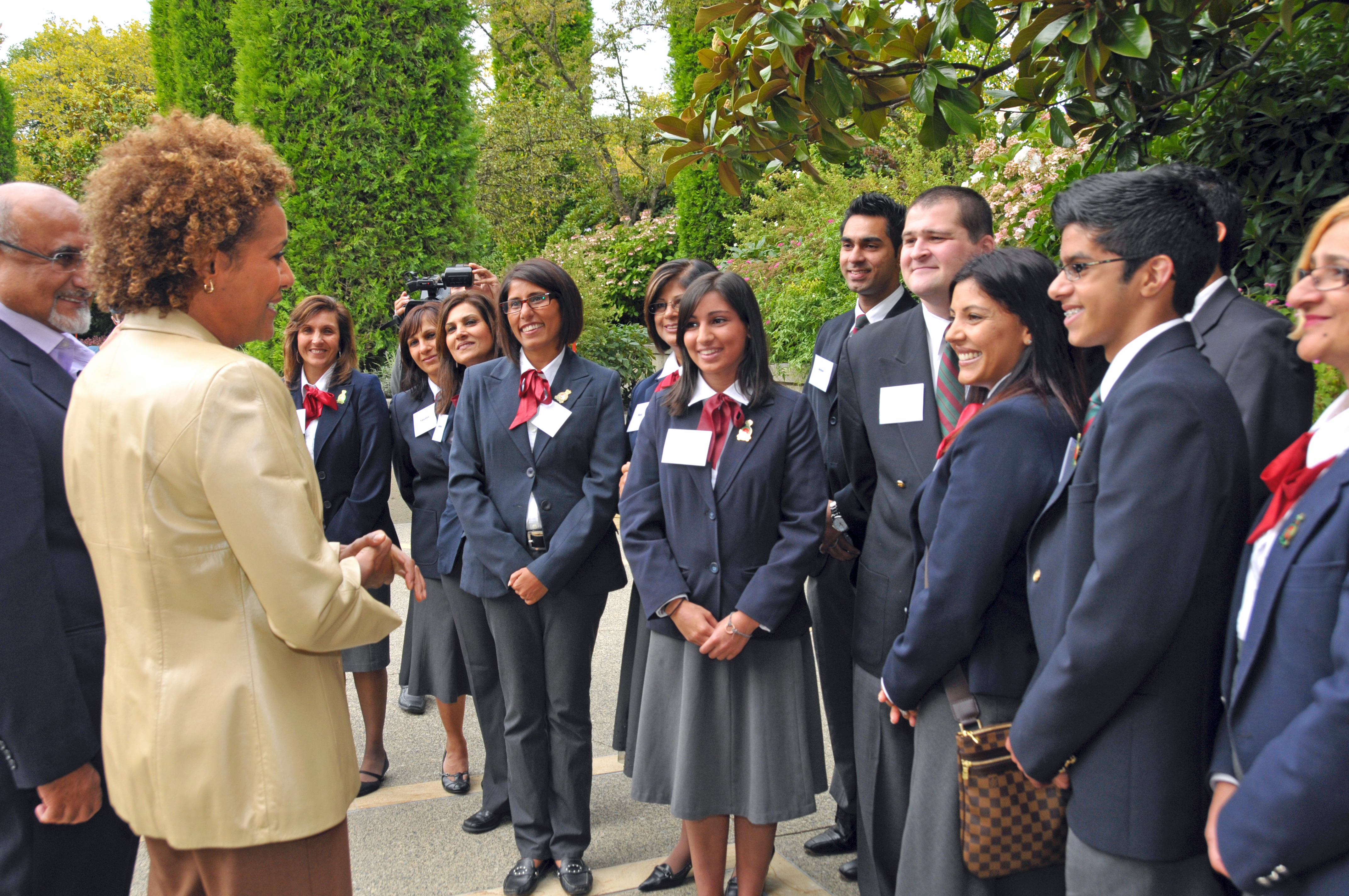 Her Excellency the Right Honourable Michaëlle Jean, Governor General of Canada, speaks with volunteers at the Olympic Truce event hosted at the Ismaili Centre, Burnaby in 2009. Courtesy of the Ismaili Council for Canada
Her Excellency the Right Honourable Michaëlle Jean, Governor General of Canada, speaks with volunteers at the Olympic Truce event hosted at the Ismaili Centre, Burnaby in 2009. Courtesy of the Ismaili Council for CanadaTwenty-five years ago, Mawlana Hazar Imam called for a better understanding of Islam in the Western world. “Muslims living in the West can, and indeed must, contribute to improving the comprehension of what their faith does stand for, and to dispelling misconceptions which, both in the short and the long term, pose a serious threat to international understanding,” he said.
The need for this understanding has never been more evident than in the world today. The institutional buildings and presence in Canada, including the Ismaili Centre in Burnaby, the Delegation of the Ismaili Imamat and Global Centre for Pluralism in Ottawa, as well as the new Ismaili Centre, the Aga Khan Museum and their Park in Toronto, serve not only as symbols but also as vehicles to help develop and cultivate this understanding.

